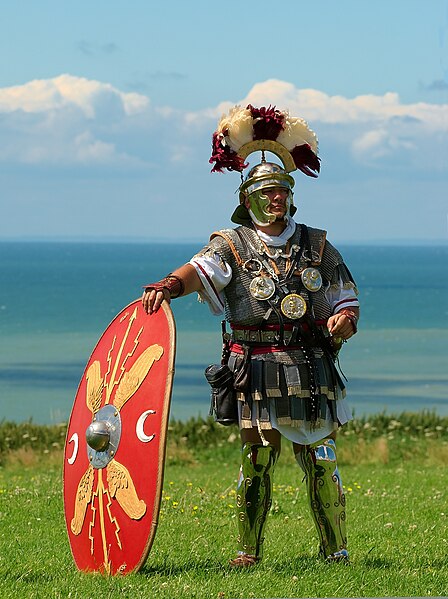In the Roman army during classical antiquity, a centurion, was a commander, nominally of a century, a military unit originally consisting of 100 legionaries. The size of the century changed over time, and from the first century BC through most of the imperial era was reduced to 80 men.
A historical reenactor in Roman centurion costume. Note that the vambraces used in this reconstruction are an anachronism.
A cenotaph to Marcus Caelius, a centurion of Legio XVIII killed at the Battle of the Teutoburg Forest. Note the prominent display of the vine staff, his sign of office.
A Roman Centurio on a portrait medaillon of his grave, 2nd century A.D. from Flavia Solva
Artifacts from a centurion's tomb.
The Roman army was the armed forces deployed by the Romans throughout the duration of Ancient Rome, from the Roman Kingdom to the Roman Republic and the Roman Empire, and its medieval continuation, the Eastern Roman Empire. It is thus a term that may span approximately 2,206 years, during which the Roman armed forces underwent numerous permutations in size, composition, organisation, equipment and tactics, while conserving a core of lasting traditions.
Levy of the army, detail of the carved relief on the Altar of Domitius Ahenobarbus, 122–115 BC.
Gaius Marius, to whom later historians would misattribute putative reforms of the Roman army
Roman auxiliary infantry crossing a river. They can be distinguished by the oval shield (clipeus) they were equipped with, in contrast to the rectangular scutum carried by legionaries. Panel from Trajan's Column, Rome
Roman relief fragment depicting the Praetorian Guard, c. 50 AD








